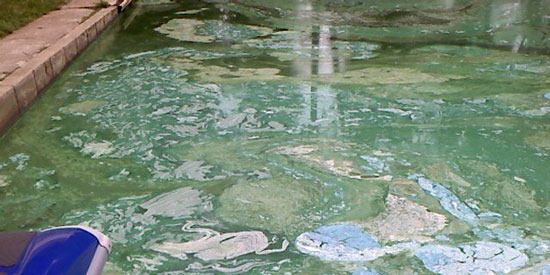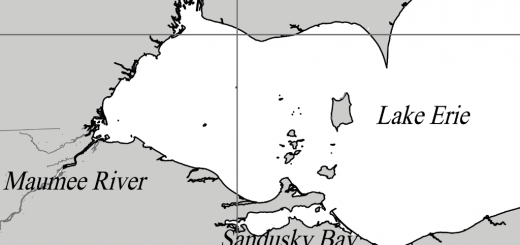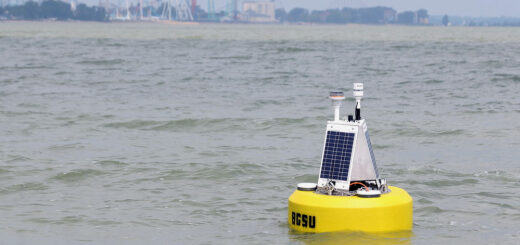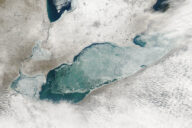Blue-green algae contamination threatens Grand Lake
4
A recent bloom of blue-green algae in Ohio’s Grand Lake
A new species of blue-green algae is appearing in thick mats on Grand Lake, Ohio’s largest inland lake, causing fish kills as well as concern for the health and safety of the general public.
As a result, the Ohio Department of Natural Resources has posted warning signs around the lake, advising swimmers and boaters to stay away from “visible surface scum.”
This isn’t the first algae problem Grand Lake has faced. In fact, the 13,500-acre lake has long been considered one of the state’s most polluted. Just last year, pollution-spawned algal blooms appeared, resulting in similar water quality advisories and warning signs.
In 2009, the algae was determined to be of the planktothrix species, which produces a neurotoxin called microcystin. This species has the ability to cause skin and throat irritations, as well as gastrointestinal symptoms in humans and even death for small animals that ingest it.
The toxins in the lake did not decline sufficiently to warrant taking the signs down until two months ago.
The Ohio Environmental Protection Agency completed testing last week that shows the new algae are not producing toxins. However, algae that have the potential to generate toxins don’t necessarily do so all the time.
Scientists still don’t know why algae produce the toxins at certain times and not others, said Ohio EPA spokeswoman Dina Pierce. She also noted that the study of cyanobacteria “is an emerging science” and that it is “not uncommon for different species to dominate at different times.”
In addition, Pierce announced EPA testing has determined that the new species is Aphanizomenon gracile. This type of algae can produce three different toxins. The first is called Clyindrospermopsin, which can cause liver tumors and gastrointestinal distress. The other two, anatoxin and saxitoxin, affect the nervous system.
It isn’t yet clear if Aphanizomenon gracile is the only new species of algae growing in the lake. Pierce said the Ohio EPA is trying to learn as much as it can about the new algae in order to inform the public.
State issues advisory for Grand Lake [The Daily Standard] ODNR Head Visits Region [The Evening Leader] Water Warning at Grand Lake St. Marys [The Urban Daily Citizen] New Water Warning for Grand Lake [WHIO-TV Dayton, OH] Visitors warned about algae in lake [The Columbus Dispatch]













[…] is in Grand Lake St. Marys, the state’s largest inland lake, which has been experiencing a massive bloom of toxic blue-green algae this […]
[…] biggest algae problem in Ohio received some badly needed attention today. Governor Ted Strickland visited Ohio’s largest inland […]
[…] dangerous type of algae is of course smothering Grand Lake St. Marys as well as reaching all-time highs in Lake Erie. Additionally, there have been several reports of […]
[…] loading. Projects included a trial run for alum treatments and an attempt to physically flip the thick algal mats covering the […]